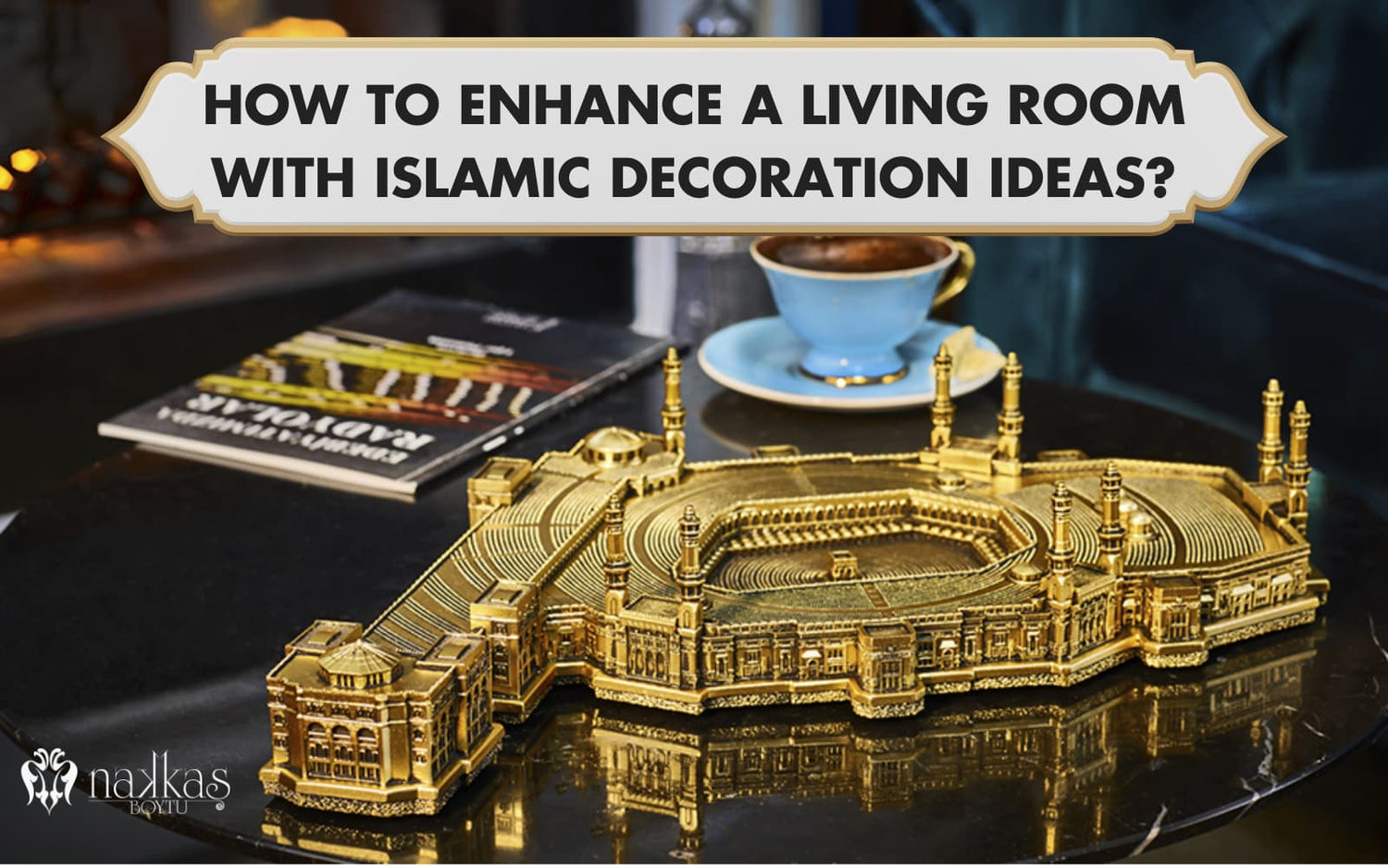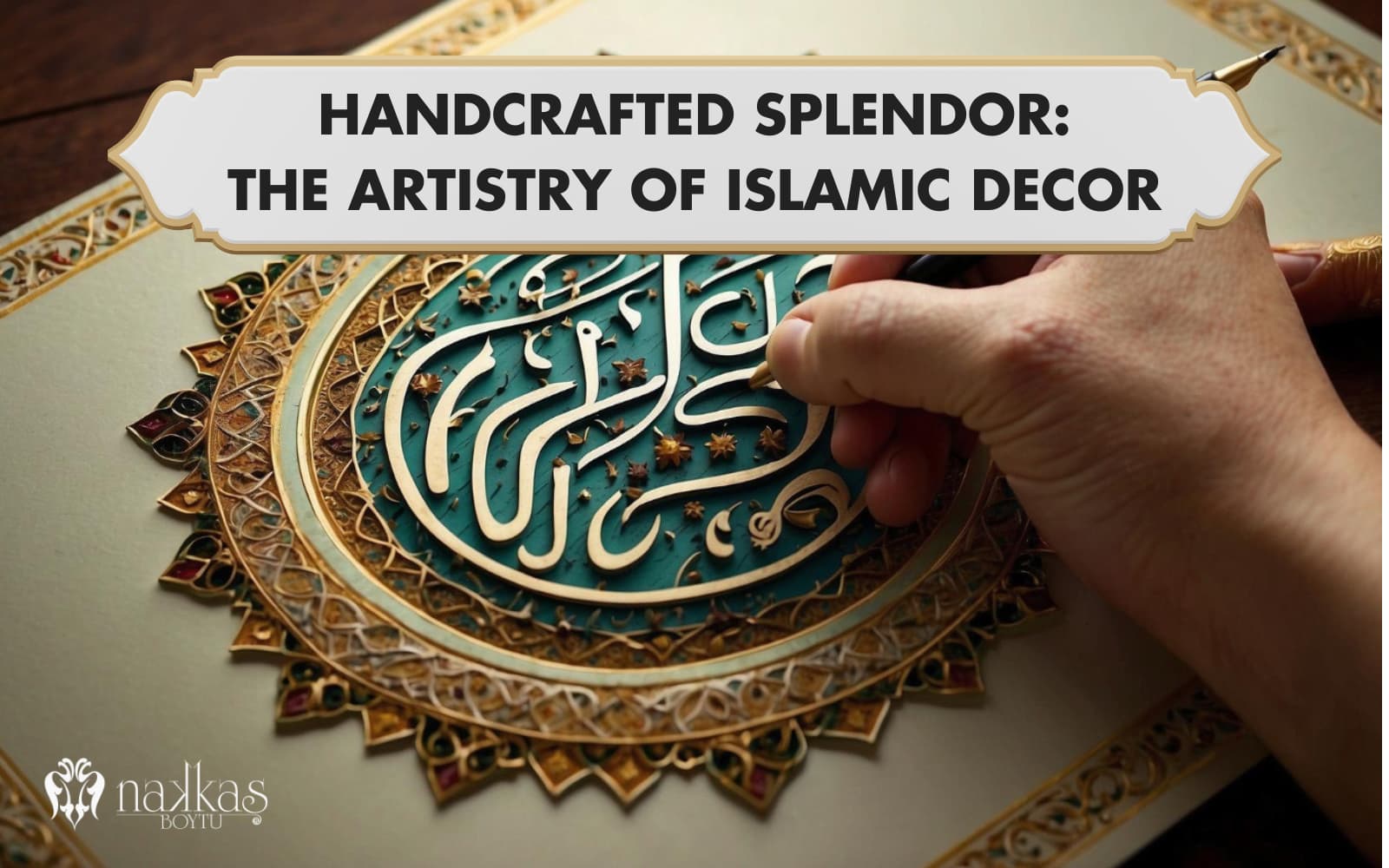Transforming a living room into a reflection of Islamic art and culture offers a unique opportunity to decorate with elements that enrich the space, inspire tranquility, and celebrate heritage. From intricate calligraphy to geometric patterns, Islamic decor ideas are designed to blend timeless traditions with modern aesthetics. With thoughtful choices, you can design a living room that not only enhances its beauty but also creates a sanctuary of spiritual inspiration. Let these Islamic decoration ideas guide you in creating a space that connects art and faith, inspiring a serene and welcoming atmosphere.
What are the 5 Islamic Decoration Ideas for a Living Room?
Here are 5 unique ideas to transform your living room into a space that resonates with Islamic culture and artistry:
- Use Islamic Lighting
- Embellish With Islamic Art
- Use Calligraphy Designs
- Create a Dedicated Prayer Space
- Use Islamic Geometric Patterns
Islamic decoration ideas for a living room encompass a blend of cultural heritage, religious significance, and modern aesthetics. These ideas are not about aesthetics; they reflect a deeper connection with Islamic values and traditions.

1. Use Islamic Lighting
Islamic lighting is a unique and elegant way to infuse a living space with cultural significance and a serene ambiance. Often adorned with intricate Arabic patterns and calligraphy, these lights cast a warm, inviting glow while celebrating Islamic art. They range from traditional lanterns to contemporary lamps, each adding a unique spiritual and cultural dimension to the decor. This lighting style transforms your living room into a reflection of Islamic heritage and artistic expression.
2. Embellish With Islamic Art
A rich and diverse form of artistic expression in Muslim culture, Islamic art goes beyond decoration and embodies spiritual significance and cultural identity. This art form blends seamlessly with Islamic wall decor, such as wall hangings, rugs, and pottery. Intricate geometric patterns, calligraphy, and floral motifs characterize it. In a living room, Islamic art can be showcased through wall hangings, tapestries, or framed calligraphy, creating a serene and reflective ambiance.
3. Use Calligraphy Designs
Calligraphy designs in Islamic home decor represent a blend of artistic tradition and spiritual expression. These designs feature Arabic script, showcasing verses from the Quran or other Islamic texts, elegantly transformed into visual art. These designs can be introduced in a living room through framed calligraphy artworks, elegantly scripted wall decals, or even decorative items like cushions and lampshades. The use of calligraphy in living room decor serves as a reminder of Islam's rich linguistic and cultural heritage, creating a visually appealing and spiritually uplifting space.
4. Create a Dedicated Prayer Space
A dedicated prayer space in a Muslim home is a serene area specifically set aside for the five daily prayers, reflecting devotion and spiritual focus. This space, ideally tranquil and free from distractions, should face the qibla, aligning with the direction of the Kaaba in Mecca. Establishing a calm area with a prayer mat and subdued Islamic decor elements like geometric patterns or calligraphy in a living room can achieve this. While part of the living area, this space offers a peaceful retreat for daily prayers and meditation.
5. Use Islamic Geometric Patterns
Islamic geometric patterns are a hallmark of Islamic art, reflecting a blend of creativity and spirituality. These patterns can transform the ambiance in a living room, infusing a sense of spirituality and artistic heritage. Incorporating these patterns in rugs, wall art, or even furniture design adds a touch of elegance and cultural depth. The symmetry and complexity of these patterns enhance the aesthetic appeal and make the living room a space for contemplation, a reflection of the rich Islamic tradition.
How to Beautify the Living Room with Islamic Decor Elements?
Beautifying a living room with Islamic decor elements involves a harmonious blend of traditional Islamic aesthetics and modern design principles. The key is to create a space that reflects Islamic values and culture while maintaining a contemporary feel. One effective approach is incorporating Islamic calligraphy and geometric patterns, central to Islamic art, into the decor. These elements can be introduced through wall art, rugs, or even furniture upholstery, adding a spiritual and aesthetic dimension to the room.

Another aspect to consider is the color palette and materials used. Rich, warm colors and natural materials like wood and metal can evoke a sense of tranquility and reflection, which are important in Islamic culture. Modern Islamic decor also emphasizes simplicity and functionality, avoiding excessive ornamentation. By focusing on these elements, a living room can become a serene and inviting space that beautifully showcases Islamic culture and artistry.
What Are the Key Aspects of Exploring Islamic Decorative Themes and Elements?
The key aspects of exploring Islamic decorative themes and elements revolve around understanding and integrating the rich artistic traditions of Islamic culture into home decor. Islamic decor for home is distinguished by its focus on geometric patterns, intricate calligraphy, and a harmonious color palette, all adhering to Islamic artistic principles, notably the avoidance of depicting living beings. This style elevates the aesthetic appeal of a space and embodies deep cultural and spiritual values.
How do Islamic Symbols and Patterns Beautify a Living Room?
Islamic symbols and patterns beautify a living room by infusing it with peace and spiritual depth. These designs, often seen in Islamic table decor, wall art, and textiles, carry profound meanings. Geometric patterns symbolize the universe's infinite nature, while calligraphy often features verses from the Quran, offering both visual beauty and a reminder of faith. This combination of art and spirituality makes the living room a serene sanctuary for reflection and family gatherings. Integrating Islamic symbols into the living space not only enhances its aesthetic appeal but also fosters a connection with Islamic heritage and values.
What is the Effect of Islamic Colors for a Tranquil Living Room?
The effect of Islamic colors on a tranquil living room is profound, as they imbue the space with serenity and spiritual calm. These colors, often inspired by elements of nature such as soft blues, greens, and earthy tones, create a visually soothing environment that resonates with Islamic principles of peace and contemplation, making the living room a harmonious retreat for reflection and relaxation.The incorporation of Islamic colors not only enhances the aesthetic beauty of the room but also connects the inhabitants with a sense of spiritual well-being and cultural identity.
How do Islamic Ornaments Enhance the Beauty and Character of a Living Space?
Islamic ornaments significantly enhance the beauty and character of living space by infusing it with a sense of spirituality and cultural richness. Incorporating modern Islamic home decor into a living space creates a visually appealing and spiritually uplifting environment. The use of Islamic motifs in home decor brings a unique blend of tradition and modernity, making the space more inviting and meaningful. This harmonious blend of art and faith in Islamic ornaments transforms a house into a home that resonates with peace, tranquility, and a sense of belonging.

To truly bring the essence of Islamic art into your living space, explore the exquisite collection at Nakkaş Boytu. Their meticulously designed Islamic decor products offer a unique blend of tradition and style, perfect for enhancing your living room with cultural richness and spiritual serenity. Explore Nakkaş Boytu products to discover decor that beautifies your home and connects you with the rich heritage of Islamic art.




